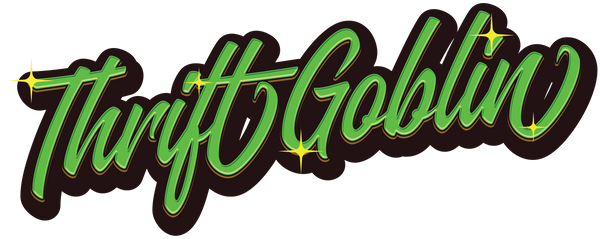Cowboy Bebop
1. Origins and Creation
Concept and Development:
- Creation: "Cowboy Bebop" was created by Sunrise Studios, with Shinichirō Watanabe serving as director, Keiko Nobumoto as the writer, and Yoko Kanno composing the music. The series was produced by Masahiko Minami and first aired in Japan in 1998.
- Inspirations: The series draws inspiration from various genres, including science fiction, westerns, noir, and jazz. The creators aimed to create a unique blend of these elements to tell compelling stories.
Premiere and Reception:
- Japanese Broadcast: "Cowboy Bebop" premiered on TV Tokyo in 1998. However, due to its mature themes, only a few episodes were initially broadcast. The full series later aired on WOWOW, a satellite network, to great acclaim.
- International Success: The series was later licensed by Bandai Entertainment and broadcast on Adult Swim in the United States, where it gained a significant following and critical acclaim.
2. Key Milestones
Episode Structure:
- Standalone Episodes: "Cowboy Bebop" consists of 26 episodes, known as "sessions." Each episode is mostly standalone, with its own story, but there is an overarching plot that ties the series together.
- Film: In 2001, "Cowboy Bebop: The Movie" (also known as "Knockin' on Heaven's Door") was released, set between episodes 22 and 23 of the series. The film expanded on the series' themes and characters.
Awards and Recognition:
- Critical Acclaim: "Cowboy Bebop" has received numerous awards and accolades for its storytelling, animation, and music. It is often cited as one of the greatest anime series of all time.
- Influence: The series has had a profound influence on both anime and western animation, inspiring countless creators and works in various media.
3. Iconic Elements

Characters:
-
Spike Spiegel:
- Overview: Spike Spiegel is the main protagonist, a laid-back yet skilled bounty hunter with a mysterious past. His martial arts prowess and marksmanship are matched by his complex personality and tragic backstory.
- Character Arc: Spike's journey throughout the series involves confronting his past and seeking closure, culminating in a dramatic and emotional finale.
-
Jet Black:
- Overview: Jet Black is Spike's partner and the owner of the spaceship Bebop. A former ISSP (Inter-Solar System Police) officer, Jet is pragmatic and serves as the voice of reason within the crew.
- Background: Jet's past as a police officer and his reasons for leaving the force add depth to his character and highlight the series' themes of redemption and loyalty.
-
Faye Valentine:
- Overview: Faye Valentine is a cunning and resourceful bounty hunter with a mysterious past. Cryogenically frozen and awakened in the future, she struggles with her identity and trust issues.
- Character Development: Faye's journey involves uncovering her past and finding a sense of belonging with the Bebop crew.
-
Edward:
- Overview: Edward, also known as Radical Edward, is a brilliant hacker with a quirky and eccentric personality. Despite her young age, she is an invaluable asset to the Bebop crew.
- Role: Edward provides comic relief and technical expertise, often aiding in the crew's bounty hunting missions with her hacking skills.
-
Ein:
- Overview: Ein is a genetically-engineered "data dog" with enhanced intelligence. Though non-verbal, Ein's actions often contribute significantly to the crew's missions.
- Popularity: Ein's adorable appearance and intelligence have made him a fan favorite.
Themes and Style:
- Genre Fusion: "Cowboy Bebop" masterfully blends genres, including science fiction, westerns, film noir, and martial arts. This unique fusion creates a rich and immersive universe.
- Jazz and Blues: The series' soundtrack, composed by Yoko Kanno and performed by The Seatbelts, features a mix of jazz, blues, and rock. The music plays a crucial role in setting the tone and enhancing the storytelling.
- Existential Themes: The series explores themes of existentialism, loneliness, and the search for meaning. Each character grapples with their past and seeks redemption or closure.
Visual and Narrative Style:
- Animation Quality: "Cowboy Bebop" is known for its high-quality animation, detailed character designs, and fluid action sequences. The visual style combines traditional hand-drawn animation with innovative techniques.
- Storytelling: The narrative style includes episodic adventures interwoven with an overarching plot. The blend of humor, drama, and action keeps the series engaging and unpredictable.
4. Fun Facts and Cultural Impact
Influence on Pop Culture:
- Anime and Beyond: "Cowboy Bebop" has influenced numerous anime series and Western media. Its impact can be seen in shows like "Firefly," "Samurai Champloo," and "Space Dandy."
- Homages and References: The series has been referenced in various forms of media, including films, television shows, and video games, highlighting its enduring legacy.
Merchandise and Adaptations:
- Merchandise: "Cowboy Bebop" has inspired a wide range of merchandise, including action figures, clothing, posters, and soundtrack albums. The series' iconic imagery and characters have become staples in anime and pop culture merchandise.
- Live-Action Adaptation: A live-action adaptation of "Cowboy Bebop" was produced by Netflix, with John Cho starring as Spike Spiegel. The adaptation aimed to bring the beloved series to a new audience while paying homage to the original.
Legacy:
- Enduring Popularity: More than two decades after its release, "Cowboy Bebop" remains a beloved and influential series. It continues to attract new fans and inspire creators across various media.
- Critical Acclaim: The series is frequently listed among the greatest anime of all time and has received widespread critical acclaim for its storytelling, music, and animation.
Memorable Quotes:
- "See You Space Cowboy..." The series' signature phrase appears at the end of most episodes, encapsulating the show's melancholic and reflective tone.

